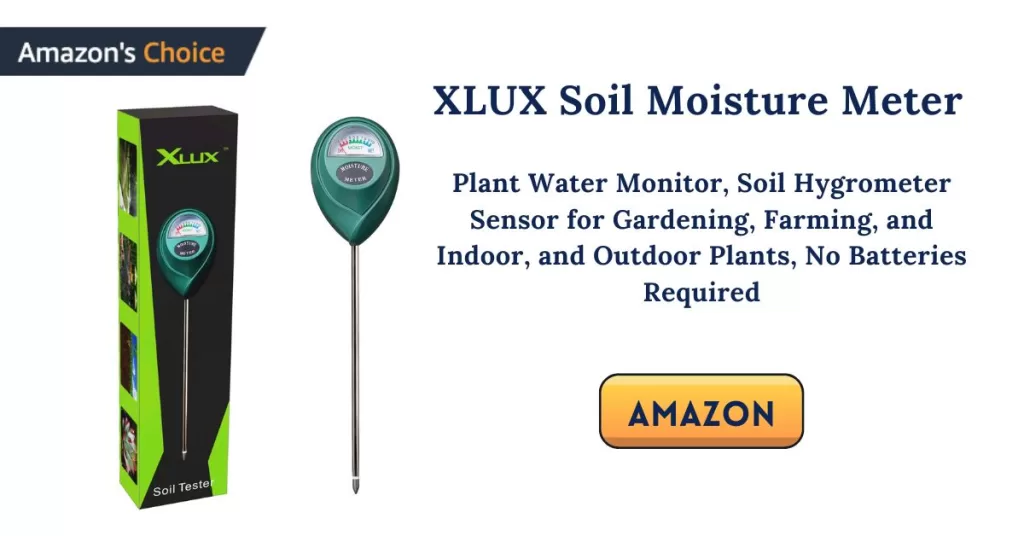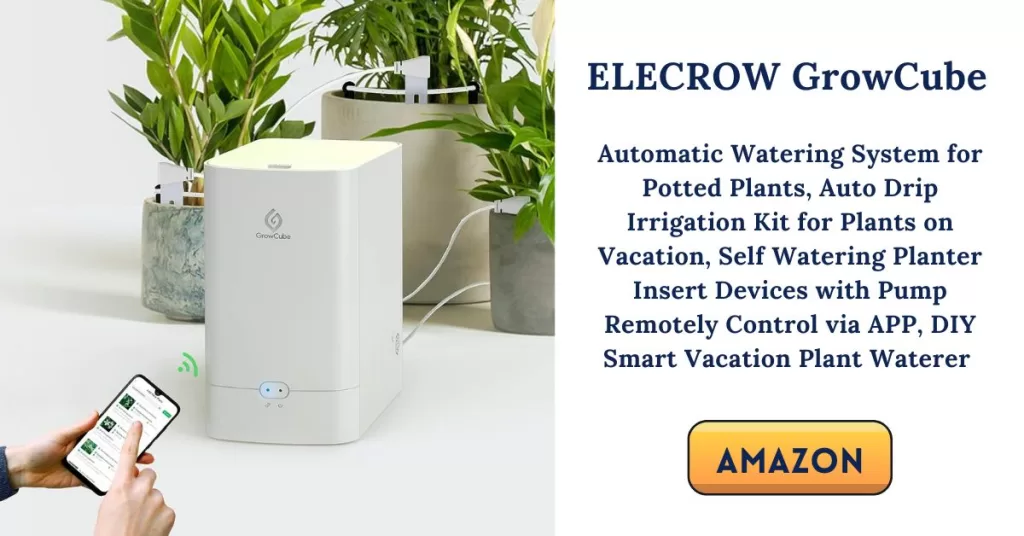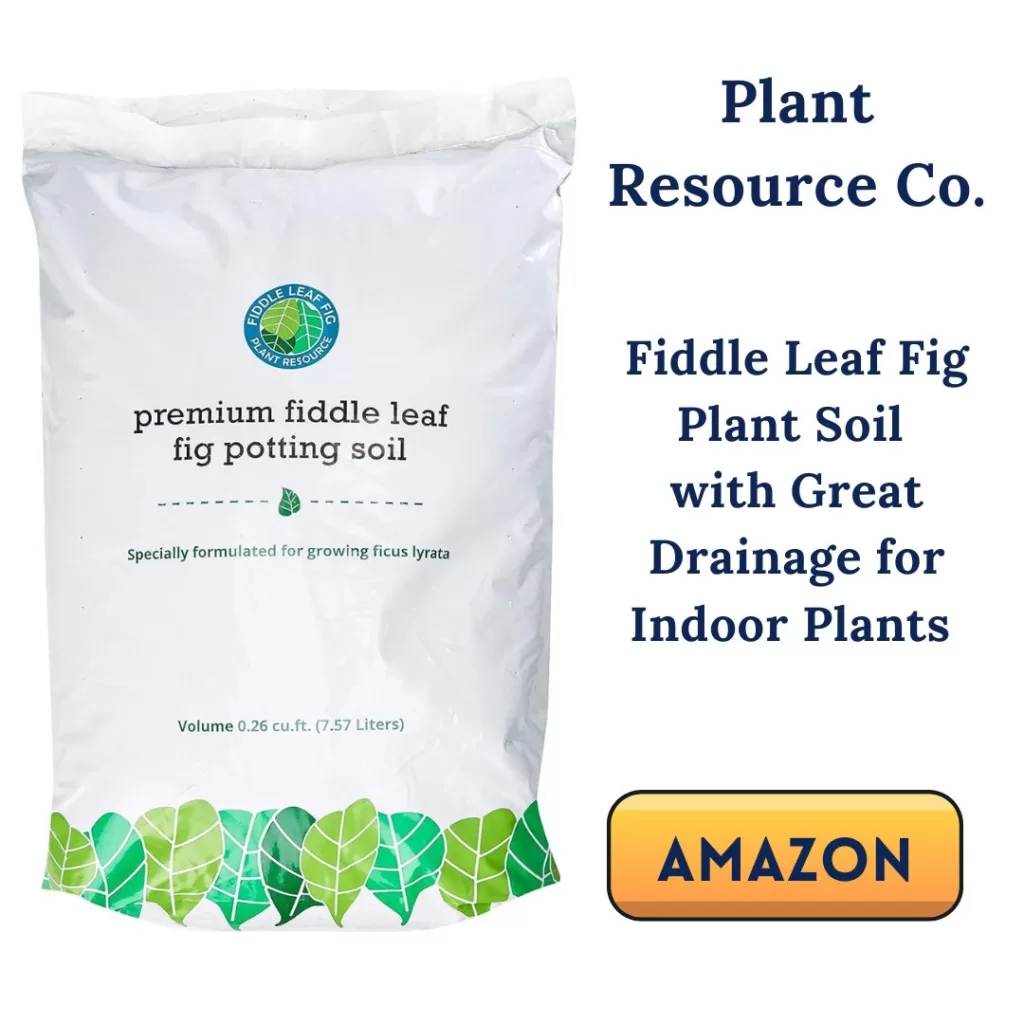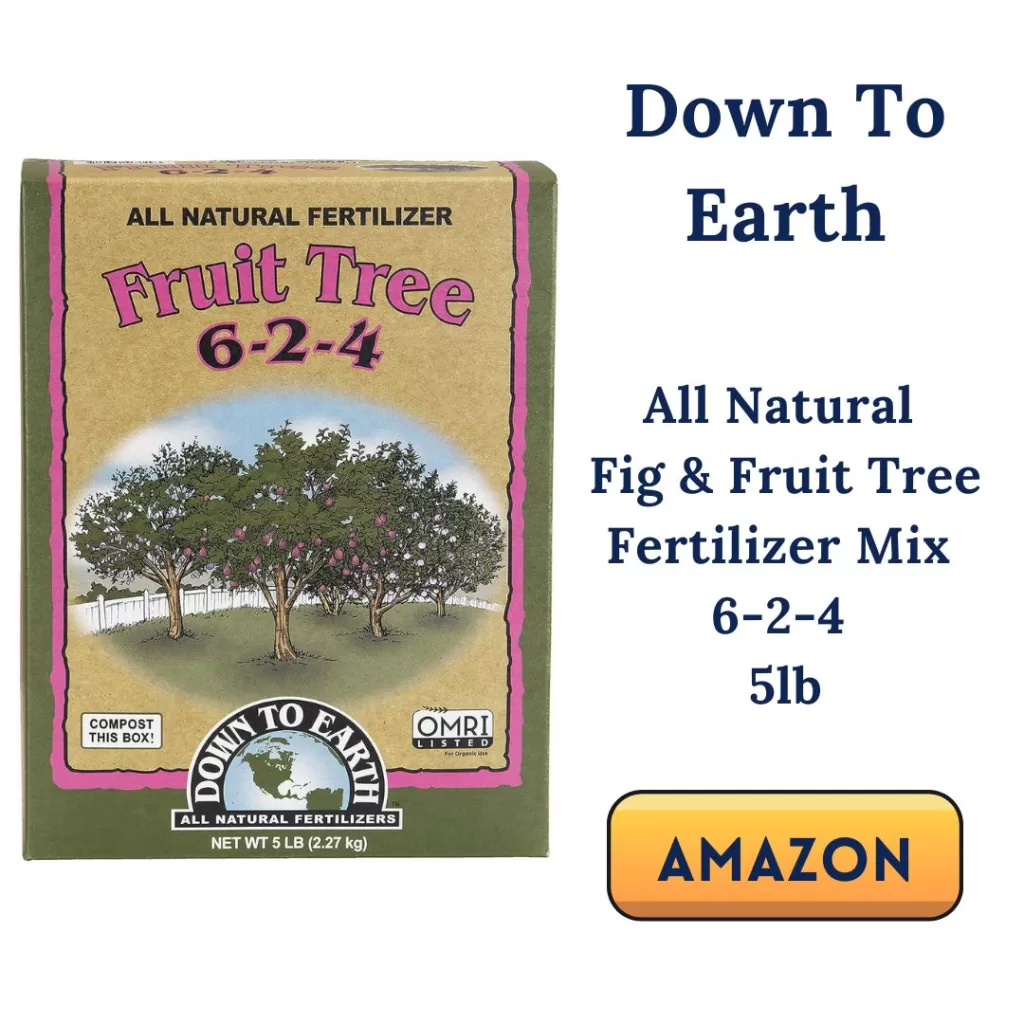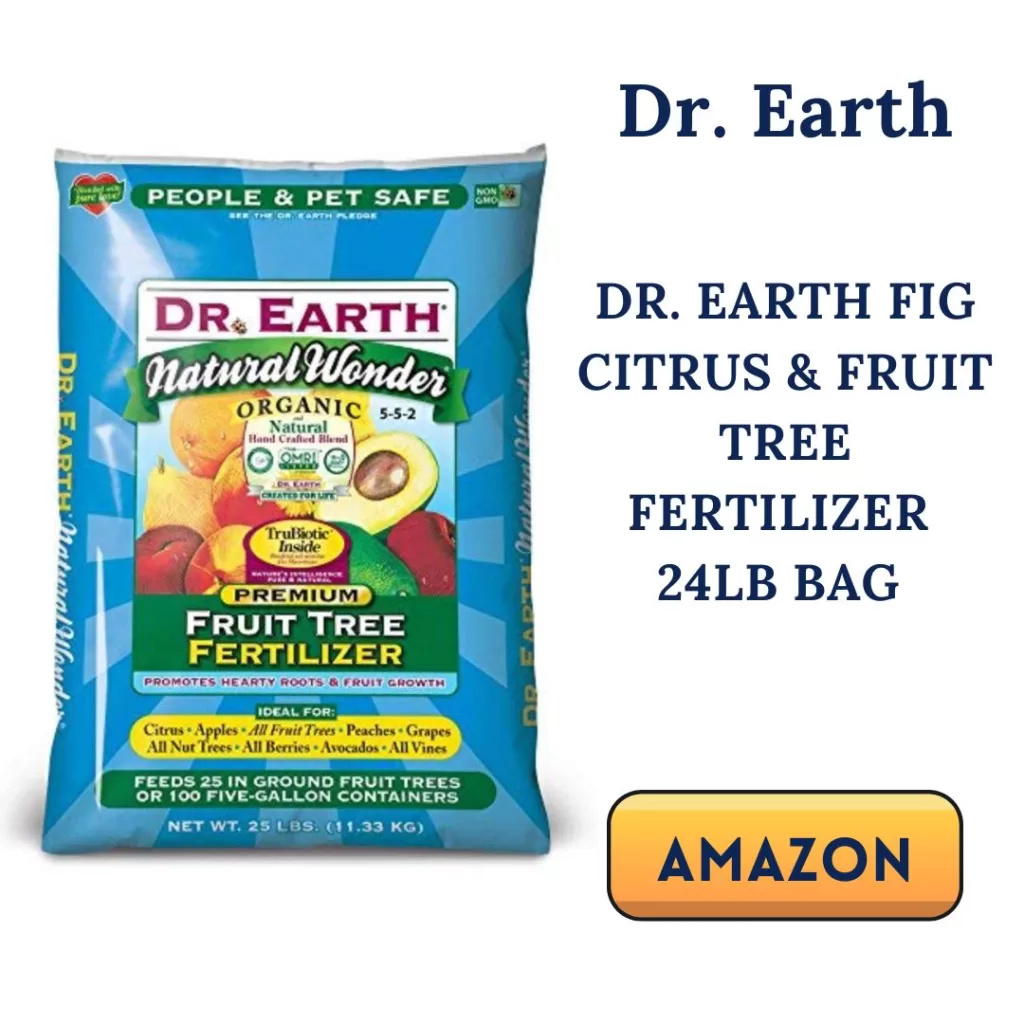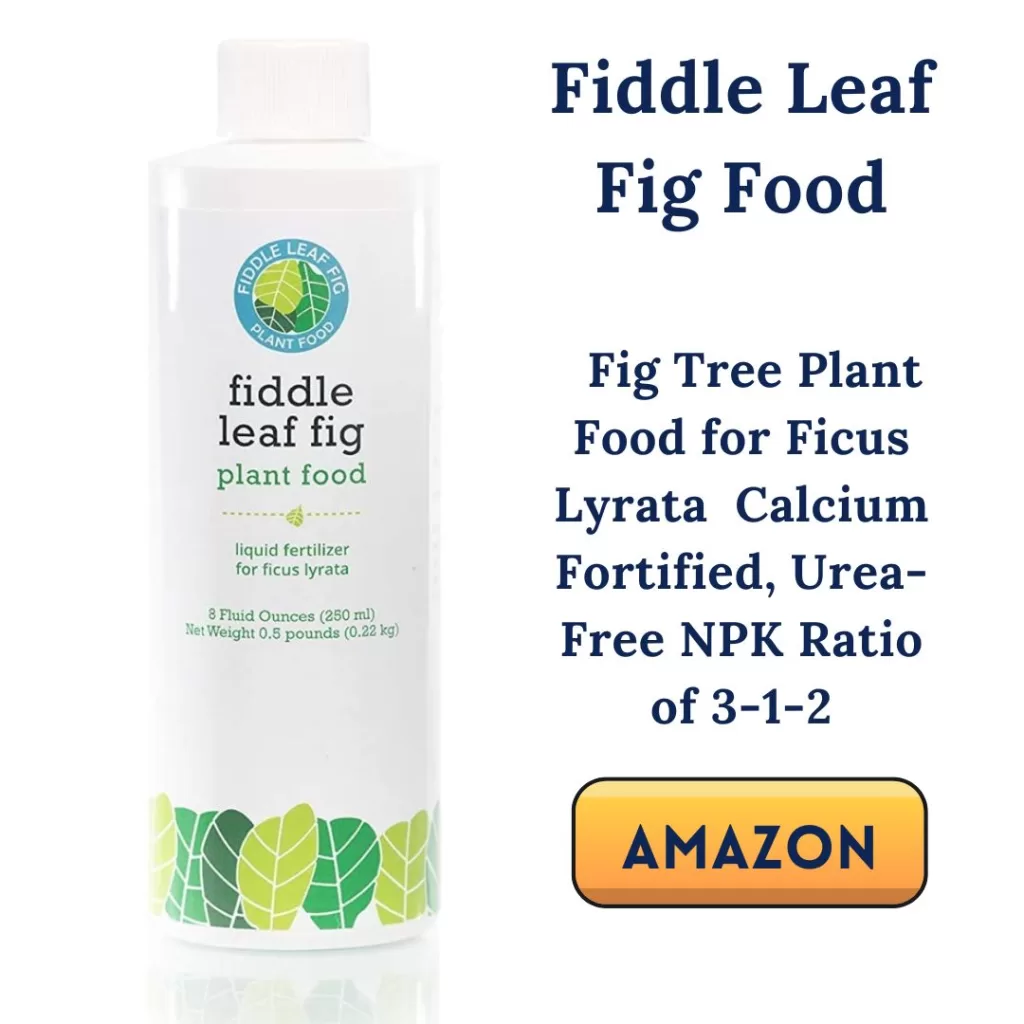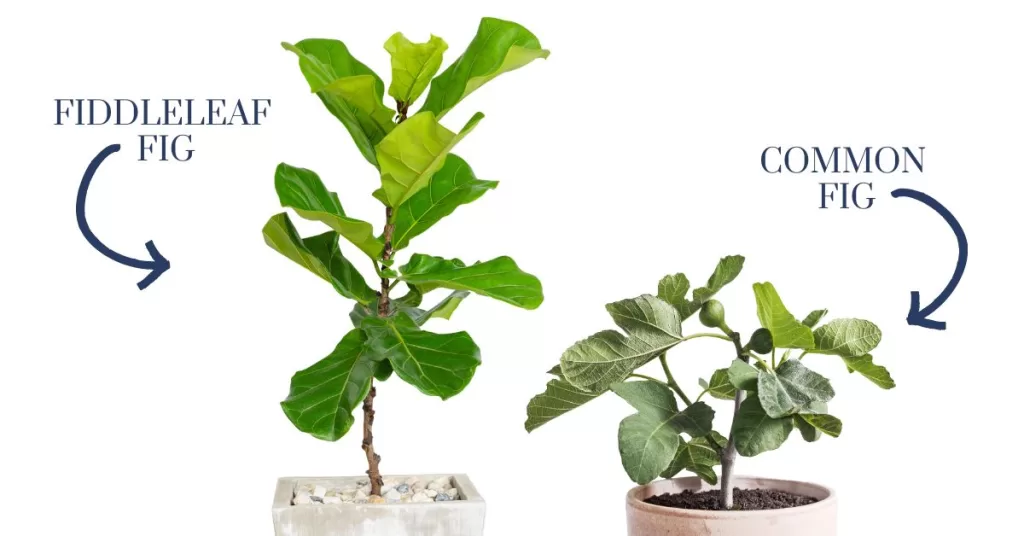
The Best Fertilizer For Potted Fig Trees & Fiddleleaf Figs
Your Guide To The Best Fig Tree Fertilizer And A Complete Growing Guide For Fiddleleaf & Fruiting Figs

Ok, so you’ve got a potted fig tree and you want to make the best choice for fertilizer. You’re in the right place.
After 25+ years of landscape design and horticulture experience, I’m going to share what I have learned on this topic with you.
But before I can guide you to the specific fertilizer you should use for your potted fig tree, we need to make sure we’re talking about the same type of fig tree.
There are two different popular types of fig trees.
The first category includes ornamental trees such as the lovely fiddle-leaf fig which most people grow as an indoor houseplant.
The other type is the common fruit-bearing fig. These two different plants have very different growth requirements and we will cover each one here.
If you’re short on time, feel free to jump ahead to the best fertilizer for the best fiddle-leaf fig plant food or the best fertilizer for fruit-bearing fig trees.

Understanding The Different Types Of Figs
Fiddleleaf Figs
Fiddle leaf figs (Ficus lyrata) are best known as the “designer trees” of the 2010s.
Before they graced the pages of Architectural Digest and home decor magazines, fiddleleaf figs were notorious for being difficult trees to grow indoors by inexperienced gardeners.
Their unique and funky silhouette made these ornamental plants highly desirable in high-end homes and buildings that have a staff devoted to tending to them and rotating in new trees when the old ones began to fade.
These “jungle trees” are beautiful trees that have very specific needs.
Here’s everything you need to know about caring for fiddleleaf figs.
How To Care For Fiddle Leaf Figs
If you’re wondering why your fiddle leaf fig tree is not thriving indoors and why its once healthy leaves now have brown spots, or why it’s slowly dropping leaves – it may have nothing to do with fertilizer.
While fiddle leaf fig plants are commonly grown as ornamental trees indoors, they are happiest in their native environments which are the lowland tropical rainforests of Cameroon and Sierra Leon in West Africa.
It is highly unlikely that the environment in your home resembles that of a tropical rainforest.
So, if your fiddleleaf fig tree is not thriving in your home, it is likely less a result of your failures as a plant parent, and more that you are not able to turn the inside of your home into a tropical sanctuary.

4 Elements To Understand About Fiddleleaf Figs
Fig trees need just a few basic things to be happy in your home.
If you get these 4 things right, your chances of growing these outdoor tropicals as indoor ornamental plants will greatly increase.
1. Light
In their native tropical habitat, Fiddle Leaf Figs (Ficus lyrata) grow in direct sunlight.
In the commercial greenhouse where your fig tree was grown, there was also direct sunlight all day long and perhaps even grow lights to encourage faster growth.
So it should be no surprise to you that your fig tree will begin to slowly die when you bring it into your home and put it in a dark corner of your bedroom or living room or in an area without bright direct sunlight, for at least 6 hours a day.
Think of each leaf on your tree as an individual solar panel.
Solar panels serve no purpose without the power of the sun.
As a designer myself, I can relate to the concept of wanting to put a tree where it looks best rather than where it will grow best.
But as a horticulturist, I know that this is simply not practical.
How Much Do You Love Your Fig?
So the question you must ask yourself is, “Do I love my fiddleleaf fig so much that I am willing to put it where it will be happiest?”.
Or, “Do I simply like the look of a fiddle leaf fig in a certain area where I know it will not survive?”.
If you are willing to work with the specific light requirements of a fiddle leaf fig – find the brightest part of your home preferably a south-facing window or set of French doors.
Once you find a location with adequate sunlight you will want to rotate your fig tree once or twice a month so that the leaves on all sides of the plant get sufficient sunlight.
If you do not have a sunny spot in your home, the next best thing is to invest in a quality grow light that will provide enough full-spectrum UV light that will keep your fig tree healthy and happy.
Once you crack the code to sunlight you’ve won half the battle of keeping your fig tree alive and thriving.
Here are 2 of my favorite grow lights on Amazon:
2. Humidity
Equal to the importance of sunlight, is humidity.
Most of our homes are very dry due to our air conditioning and heating systems.
While that is comfortable for us, it is a serious deal-breaker for moisture-loving tropical plants like fiddleleaf figs.
However, there are ways to improve the climate of your home to make your fig feel more comfortable.
The first thing you can do is increase your home’s humidity through a humidifier.
The good news is that humid air is not only healthier for figs and other houseplants, it is also healthy for you.
Figs crave a humidity level that is between 25% and 50%.
Fortunately, it is recommended that, for our own health we keep our homes at a humidity level of 30-55%.
Investing in a quality humidifier will help your home reach these optimal humidity levels.
Another thing you can do is to regularly mist your fig tree.
Moisture on the leaves will mimic the humidity of a rainforest and keep your tree hydrated and happy.
This is my personal favorite home mister and humidifier – available on Amazon.
3. Water
Watering is one of the simplest yet easiest-to-get-wrong steps in tending any plant, especially fiddleleaf figs.
Here are the 3 basic rules to keep in mind when watering fig trees:
Don't Overwater
This is the easiest and most common way to kill your fig tree.
When you give a fig too much water and its roots sit in water for prolonged periods of time they will begin to rot.
When you water, water thoroughly.
Let the soil nearly dry out before watering again.
You can check to see if your fig needs to be watered by putting your finger in the soil at the top of the pot.
If you feel any moisture, do not water.
If you don’t trust your ability to check the moisture level of the soil through the “finger test” then buy an inexpensive moisture meter online or at your local nursery.
This is my favorite one on Amazon and it doesn’t even require batteries.
Don't Underwater
Almost as bad as over-watering is underwatering.
If you forget to water your fig tree for long periods of time it will suffer and eventually die.
Remember that this plant is native to rainforests that have lots of water and moisture in the soil most of the time.
But even rainforests dry out a bit from time to time.
If you don’t think you’ll be able to remember to water your fig tree regularly, I suggest investing in a home watering system like this that will keep your fig perfectly hydrated.
Moist soil that is well-drained and not soggy is ideal for growing fiddleleaf figs.
Don't Use Chemically-Treated Water
The very best water you can give your fig tree is either well water or mineral natural spring water. Softened water, chlorinated or fluoridated tap water, or salty water are all bad options for most plants – including fig trees.
In their natural habitat, fig trees are fed with pure rainwater that is absorbed through their leaves and roots.
The closest thing you can get to that is spring water or non-hard well water from a good private well.
Stick to these watering practices for the best results with your fiddleleaf figs.
4. Soil & Fertilizer
Soil is another extremely important element when it comes to growing happy fiddleleaf fig trees.
The best soil for figs is nutrient-rich soil that has plenty of organic matter.
The right potting soil for figs is well-drained soil that has a blend of minerals and organic compost.
In the wild, figs can thrive in practically any soil type.
But in a pot in your home, soil fertility and nutrient balance are very important.
If you have a fig tree that needs to be replanted, take a trip to your local garden center and have them direct you to the best potting soil for these tropical trees.
If you don’t have a good local nursery you can visit, I suggest ordering one of these soils and fertilizers online:
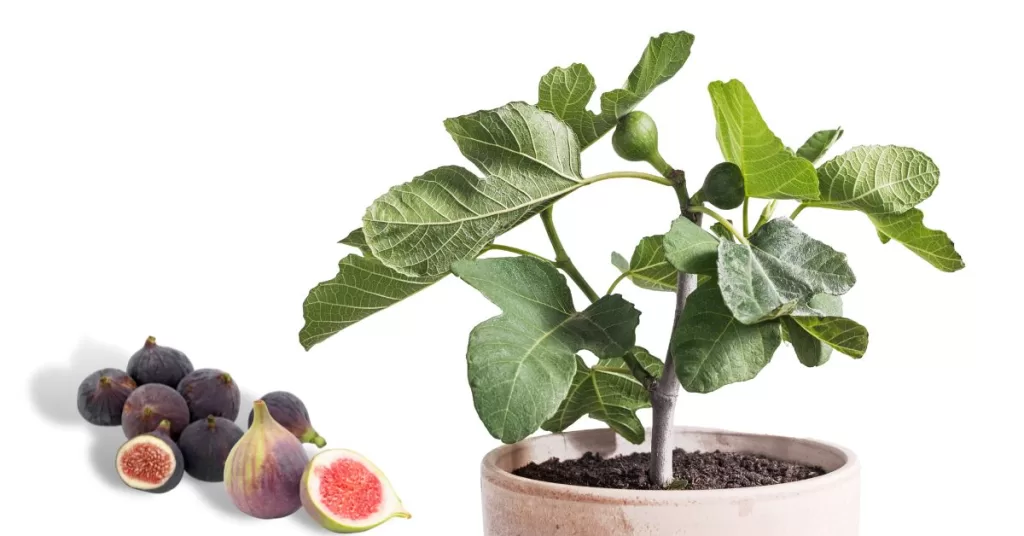
Fruiting Figs
Fig jam, fig cookies, and figgy pudding are all sourced from the hardy Mediterranean tree known as the “Common Fig” (Ficus carica).
While you can certainly grow these lovely fruiting fig trees in pots, their vigorous growth and aggressive root systems thrive best in native soil, planted directly in the ground.
Figs are well adapted to both sandy soils and clay soils in nature.
Where I live in Northern Italy, figs grow wild everywhere and get all the water they need from rain.
When grown in the ground fig trees are very drought tolerant, but in pots, they tend to dry out quickly.
If you are interested in growing a fig tree in a pot, keep in mind that these trees are not ideal houseplants because once a year they lose all their leaves.
The dormant season for fruiting figs is in the fall and winter.
When I Grew Fruiting Figs Indoors...
When I lived in New York, I grew fruiting figs indoors and I loved them.
I didn’t even mind when they lost their leaves for a few months.
But for most people, having a houseplant or tree that turns into a bunch of naked branches every year is not ideal.
If you are determined to grow this fruit-bearing plant in a pot, it’s best done in mild climates, because figs will die in cold winters.
Plant your fig tree in a very large sturdy pot.
You will want to make sure that the sneaky roots of your fig don’t escape the pot and burrow into the ground – trust me they will try.
Is it a good idea to grow a fruiting fig in a pot?
The answer depends on many factors, but mostly it depends on you and how badly you want to make it happen.
Here are my fertilizer recommendations for common fruiting figs.
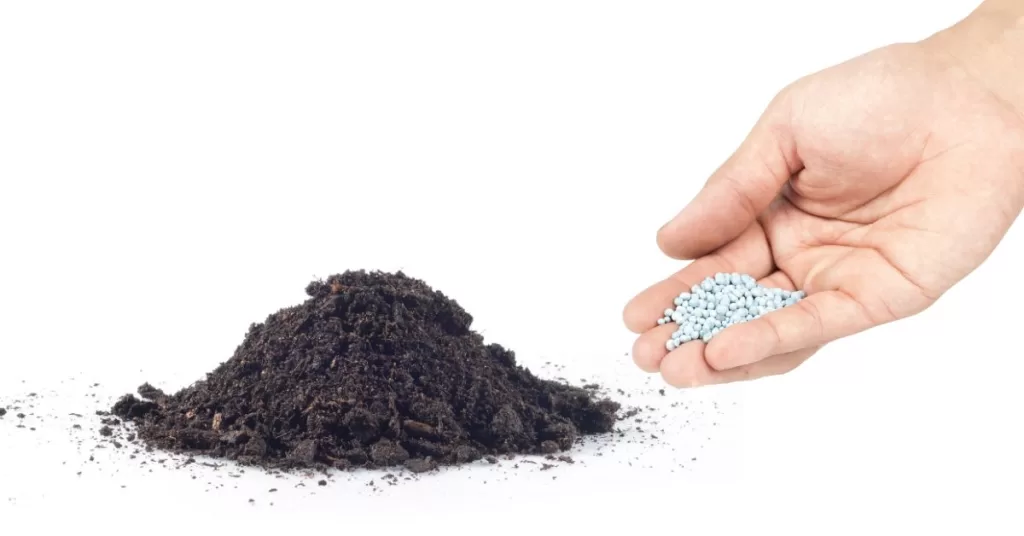
What Is The Best Fig Tree Fertilizer?
Organic Fertilizer
I personally prefer to use organic fertilizer when feeding my plants.
Fig trees growing in the wild get all their essential nutrients naturally from the organic matter that breaks down and releases an NPK ratio of natural ingredients into the soil.
Since our homes are not as nutrient-rich as the floor of a tropical rainforest, we will have to add trubiotic soil microbes, and mycorrhizal fungi through organic plant food into the containers of our pots, ourselves.
Many people like to add natural nitrogen, phosphorus, and potassium to their houseplants by grinding up banana peels or putting coffee grounds into the potting soil of their plants.
While this can be a great option for some, I personally only do this to my plants that are planted in the ground outside.
Banana peels rot and attract gnats and coffee grounds tend to cause stains as the water that drains from the pot turns “coffee color”.
All Organic Ingredients
My recommendation is to buy a high-quality organic plant food that is naturally a slow-release fertilizer because it is made from organic matter.
Any natural fertilizer that is made with worm castings, seaweed extract, fish emulsion, and other natural ingredients is an excellent choice and a great option for your potted fig tree.
Here are some of my personal favorite brands of organic plant food, for fruiting figs and fiddleleaf figs, that can be ordered online or picked up at your local nursery or garden center:
All-Purpose Fig Fertilizer
If using organic fertilizers is not a priority for you, I’m not here to shame you.
I grew up on a farm where we used man-made synthetic fertilizers and in fact, most of the crops grown globally use these types of high-nitrogen fertilizers.
Synthetic granular fertilizer or liquid fertilizer can give your plants a jolt of the three major nutrients they need.
These 3 main nutrients make up the “NPK ratio” (nitrogen, phosphorus, and potassium) in a fertilizer.
They are formulated differently for different plants.
To summarize, nitrogen will promote new growth of green leaves and branches.
Phosphorus will help develop the roots, flowers, and fruit of a plant.
Potassium aids in the movement of water, nutrients, and carbohydrates in the leaves and branches.
It is very easy to use too much fertilizer and thus get too much nitrogen on a plant when using general-purpose fertilizer.
Too much nitrogen will burn or even kill a plant and even the “right fertilizer” used in the wrong way is a bad thing – especially for potted plants like fig trees.
That’s why I recommend using a slow-release fertilizer.
Well-balanced fertilizers that are released slowly into the soil will feed your plant without burning the roots with too much nitrogen.
Here are some of my favorite slow-release fertilizer brands and products that you can order online or buy in your local nursery:
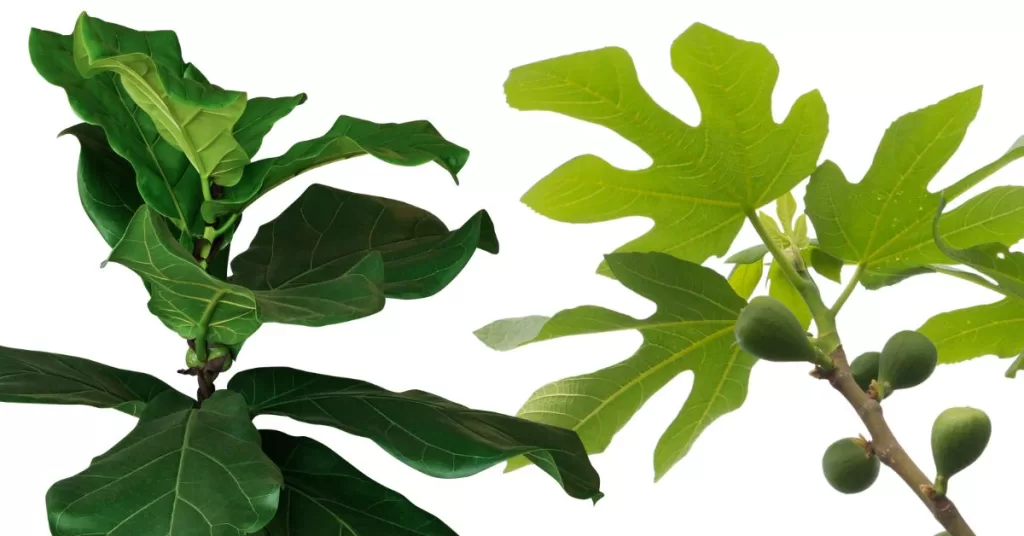
Recap
You may now officially consider yourself an expert on growing fig trees in pots.
You now also know the best fertilizer for fig trees in pots and where to find it.
By following these steps and understanding what fig trees need to be happy in your home, you can grow the happiest trees that you can enjoy for years to come.
Here’s a quick recap of the topics we covered together:
- Fiddle Leaf Figs and Common Fruiting Figs are not the same thing. They have very different needs. Fruiting figs are best planted in the ground in your garden. While Fiddleleaf figs can grow in your home for years if cared for properly.
- Growing happy fig trees requires getting these 3 things right: Light, Water & Soil.
- Don’t Over Water & Don’t Under Water: use “the finger test” or buy a soil moisture meter.
- Give your fig at least 5-6 hours of sunlight every day: use a “grow light” if you don’t have enough natural light.
- Make sure you plant your tree in a high-quality planting mix/potting soil.
- Use a high-quality slow-release fertilizer to feed your fig tree: any slow-release fertilizer is good, but organic is the best option.
Be sure to save this article to refer back to in the future.
If you want to learn more about gardening, here are some of our recent articles on the topic:
Disclosure:
Here at All Roads Lead To Italy, we only recommend products we would use ourselves and all opinions expressed here are our own.
This post may contain affiliate links with potential savings at no additional cost to you.
In some cases, we may earn a small commission.
Read our privacy policy for full details.


Dreaming of Moving to Italy?🇮🇹 - Get this FREE podcast & be INSPIRED by someone who moved from New York to Italy in 2020!
*By signing up for this Podcast you’ll also be joining our mailing list through which we will keep you up to date on all things Italian! We never sell your information and you can easily unsubscribe at any time.
Share This Post
Author Info:

Nathan Heinrich
Nathan is a writer, designer & horticulturist. He is the founder and Editor-in-Chief of "All Roads Lead to Italy" Magazine & host of the Top-10 Travel Podcast, "I'm Moving To Italy!". Nathan was born and raised in a 6th generation farming family in Northern California, he is currently, a dual Italian citizen, living in the Prosecco Valley of Northern Italy, near Venice.







